 Lawrence Hylton photographed this white-lipped pit viper (Trimeresurus albolabris) that had made its roosting site in a rusty paint can. “Some evenings she either wasn’t in the canister or she was hiding, so there were evenings that I just stood there getting eaten by mosquitoes for little result.”
Lawrence Hylton photographed this white-lipped pit viper (Trimeresurus albolabris) that had made its roosting site in a rusty paint can. “Some evenings she either wasn’t in the canister or she was hiding, so there were evenings that I just stood there getting eaten by mosquitoes for little result.”Heading out into the Hong Kong night, photographer Lawrence Hylton is on the lookout for something lots of people will avoid: lurking creatures.
Hylton looks for snakes, frogs, insects, birds, turtles, moths, spiders, and mammals which can all be found in the biodiverse city.
“I started properly photographing wildlife during Covid-19 when I was out on a hike and encountered a snake,” Hylton tells PetaPixel.
“Knowing very little about snakes other than there are cobras here, I was spooked and feared for my life. But the snake just stayed put on the trail then gradually slithered into the bush.”
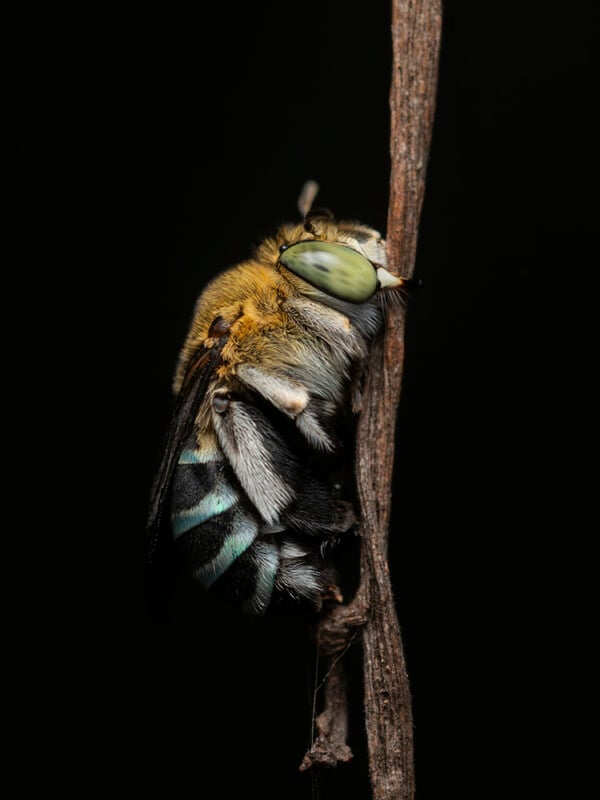 Zonamegilla (bee).
Zonamegilla (bee).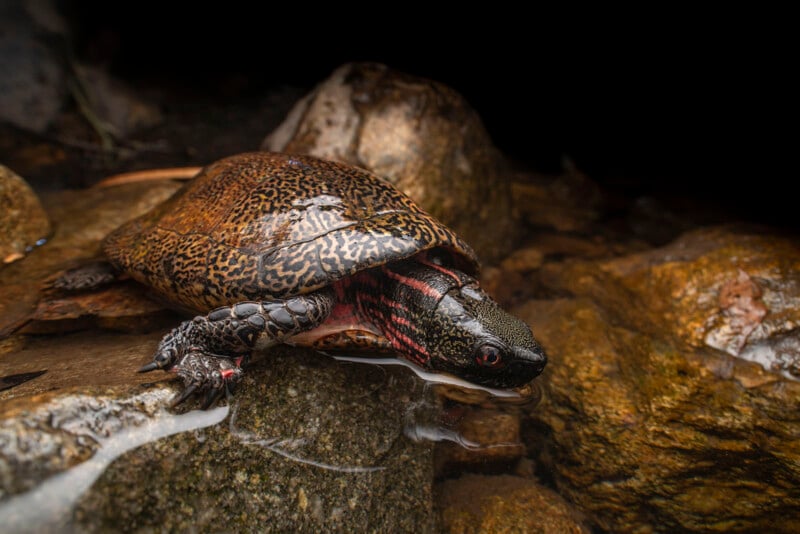 Beale’s eyed turtle (Sacalia bealei).
Beale’s eyed turtle (Sacalia bealei).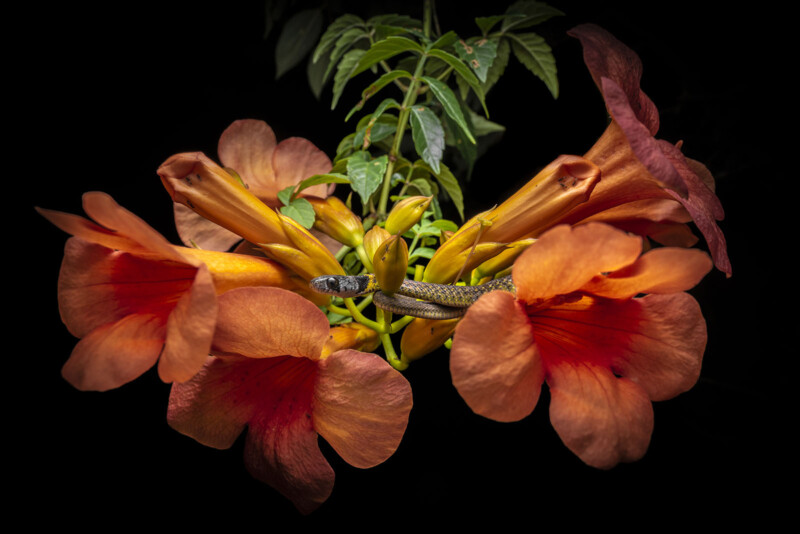 Heller’s red-necked keelback (Rhabdophis helleri).
Heller’s red-necked keelback (Rhabdophis helleri).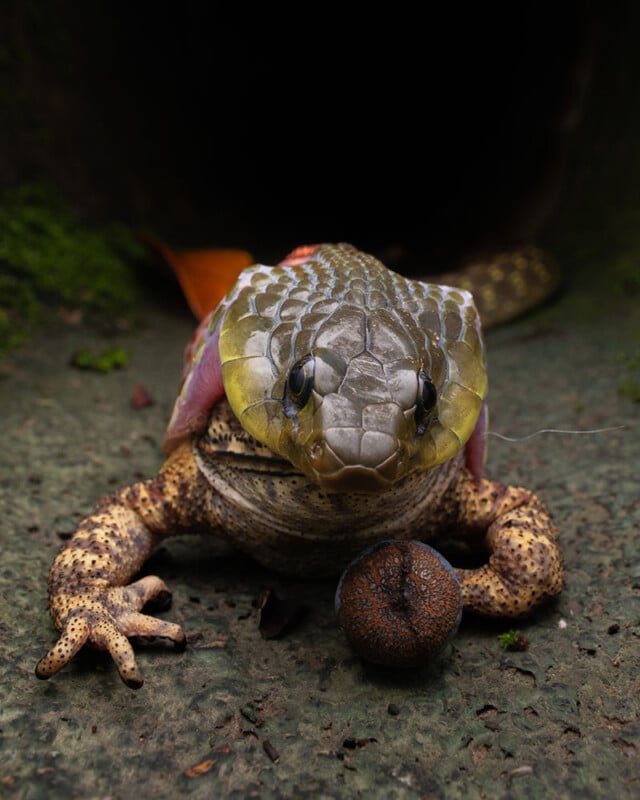 Heller’s red-necked keelback (Rhabdophis helleri).
Heller’s red-necked keelback (Rhabdophis helleri).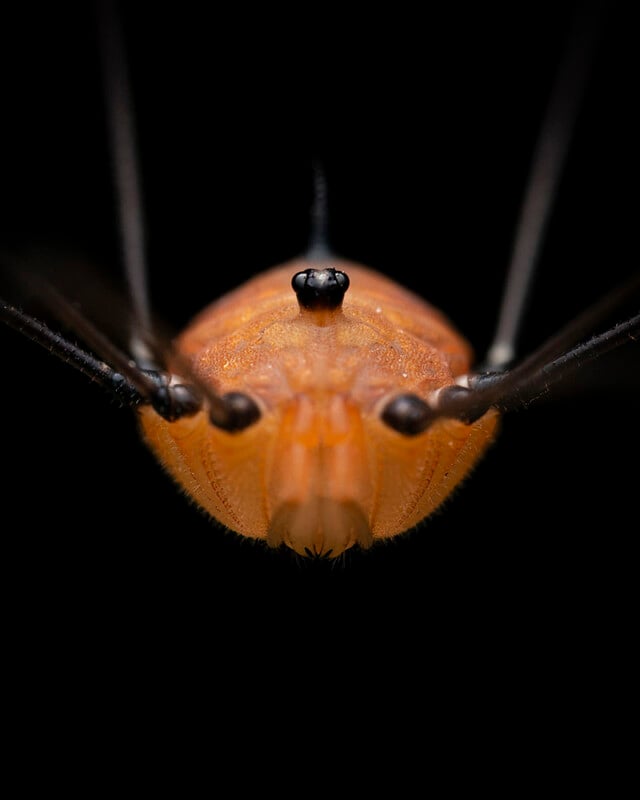 Pseudogagrella.
Pseudogagrella.The photographer realized that perhaps he had the wrong impression of snakes and began researching the ones that reside in Hong Kong.
“Hong Kong’s wildlife, particularly the ones I’m interested in, are typically nocturnal,” explains Hylton. “The diversity of species that can be found during the hours of darkness outcompetes the diurnal species by orders of magnitude.”
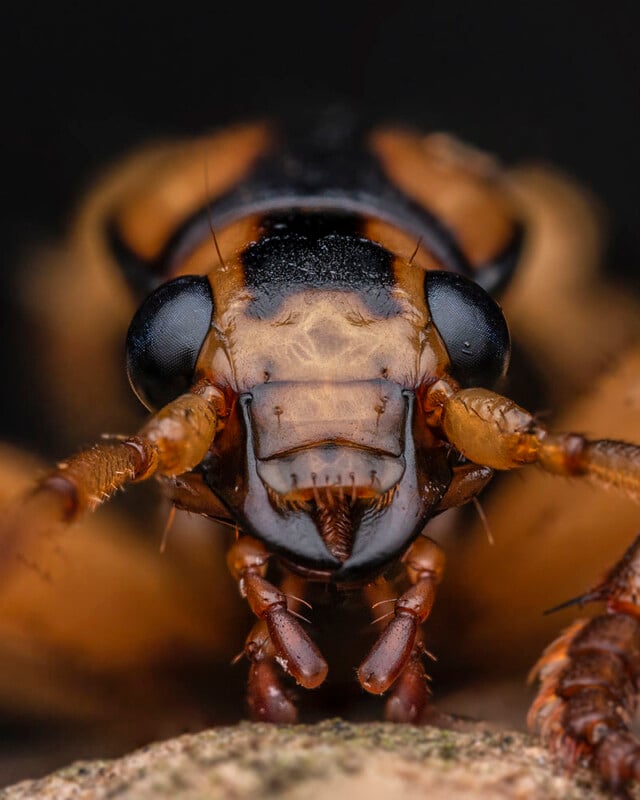 Ground beetle (Pheropsophus).
Ground beetle (Pheropsophus).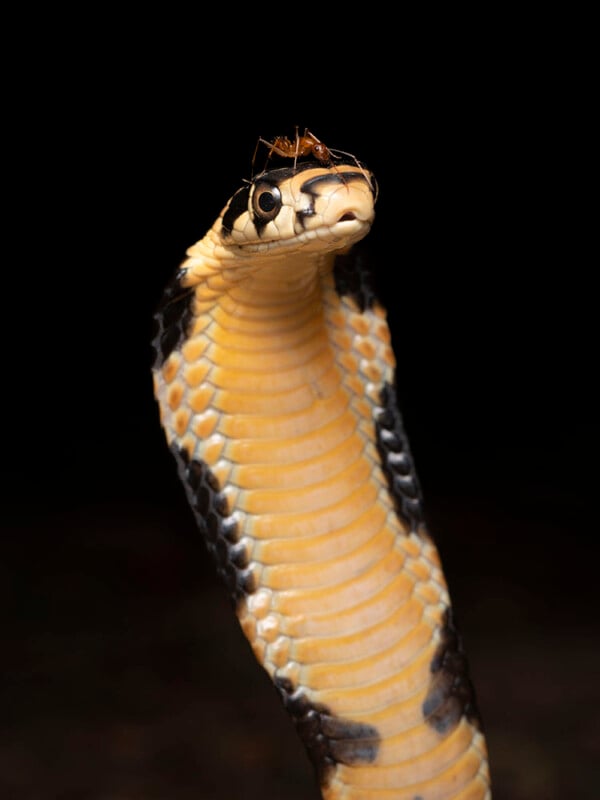 King cobra (Ophiophagus hannah).
King cobra (Ophiophagus hannah).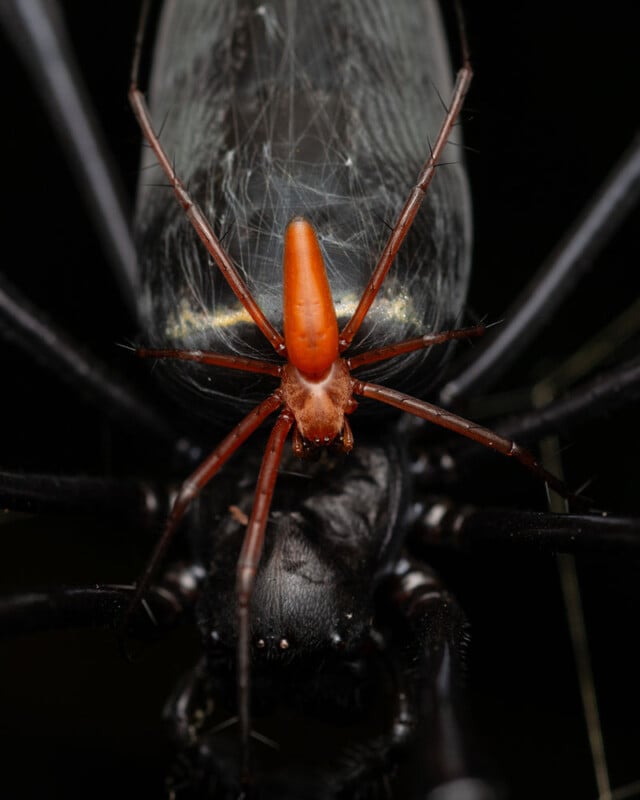 Golden orb-web spider (Nephila pilipes).
Golden orb-web spider (Nephila pilipes).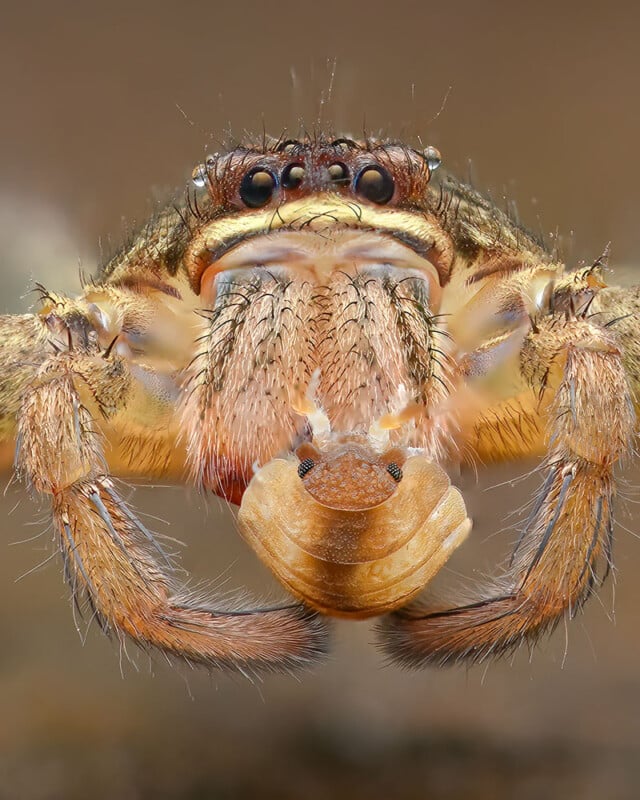 Huntsman spider (Heteropodavenatoria).
Huntsman spider (Heteropodavenatoria).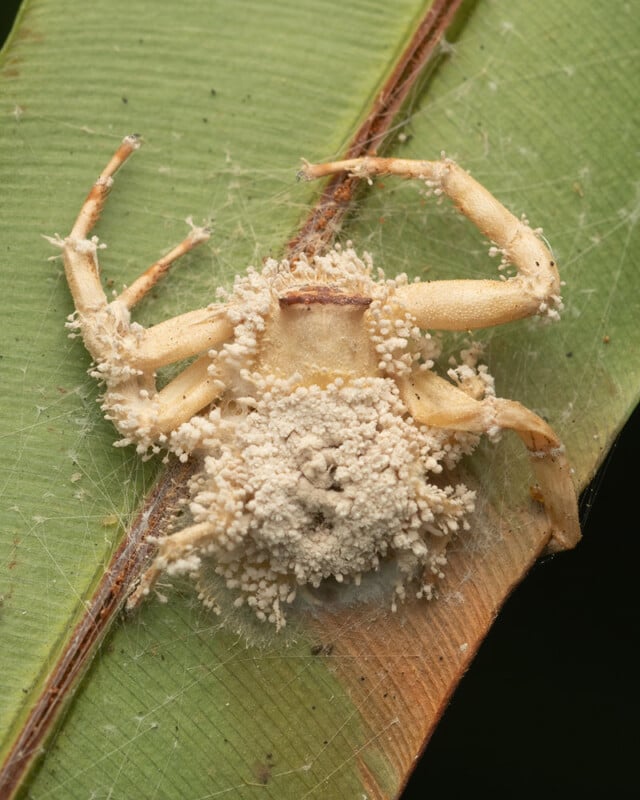 A parasitic fungus called gibellula that had killed a crab.
A parasitic fungus called gibellula that had killed a crab.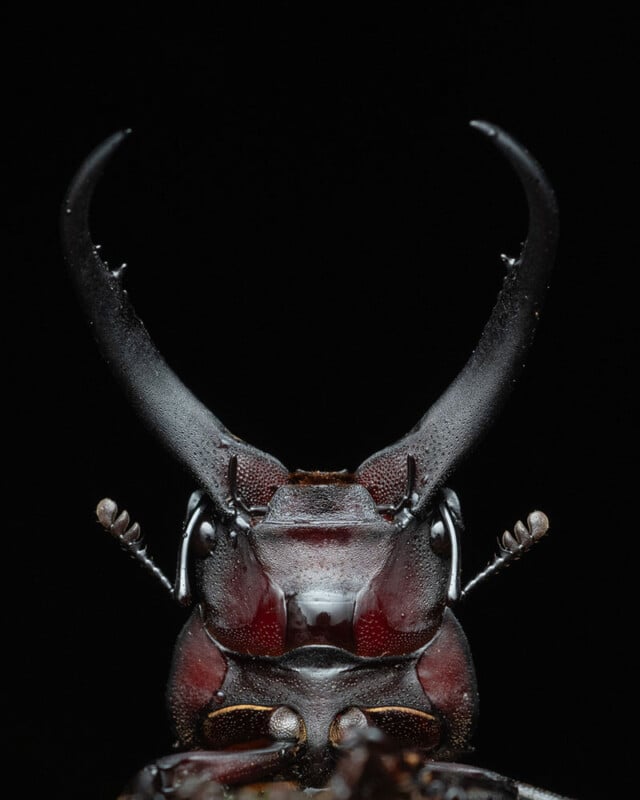 Epidorcus gracilis.
Epidorcus gracilis.Working at night is no bad thing because Hong Kong is very hot during the day. Nevertheless, it remains humid during nightfall and Hylton often has to hike to find his subjects.
“I’ve had to shrink down my photography gear to also include water and batteries,” says Hylton.
“But gear wise I’ve maintained my love for DSLR, in particular a Nikon D850 that I use with a NIKKOR 60mm and a Raynox diopter for close and magnified shots. I also carry a Laowa 15mm wide angle to capture larger critters or if I want to photograph a subject in its habitat.”
When it comes to lighting, Hylton uses a Godox V1 flashgun with Cygnustech’s custom-made diffusers. It also has a handy light setting for when his torch breaks.
Having the gear is one thing, deploying it for the best shot is another, and capturing a Hong Kong creature requires a lot of patience.
“Trying to document subjects that have a tendency to steer away from humans is a challenge,” says Hylton.
“The animals go about their business and it’s my role to position myself to get a shot representing the subject whilst not disturbing them too much.”
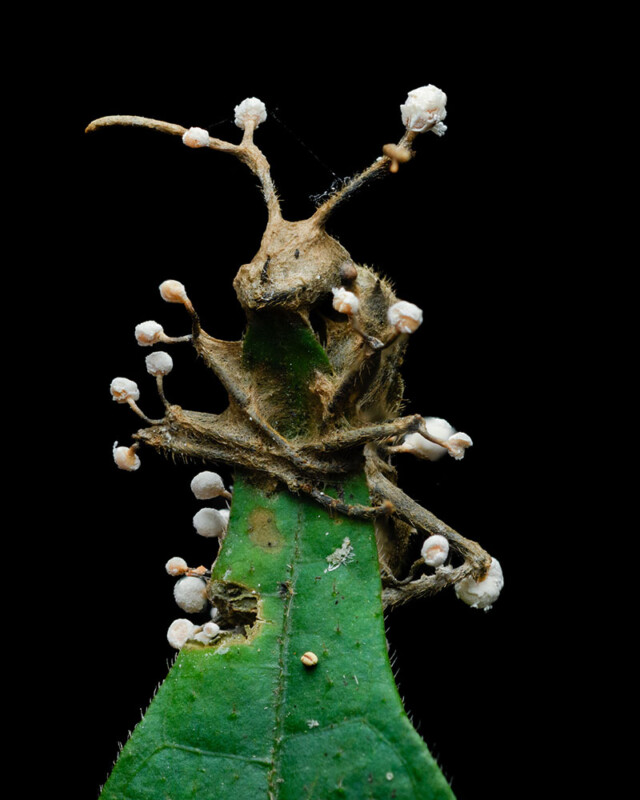 Complex ophiocordyceps australis, a type of fungi that had killed this insect.
Complex ophiocordyceps australis, a type of fungi that had killed this insect.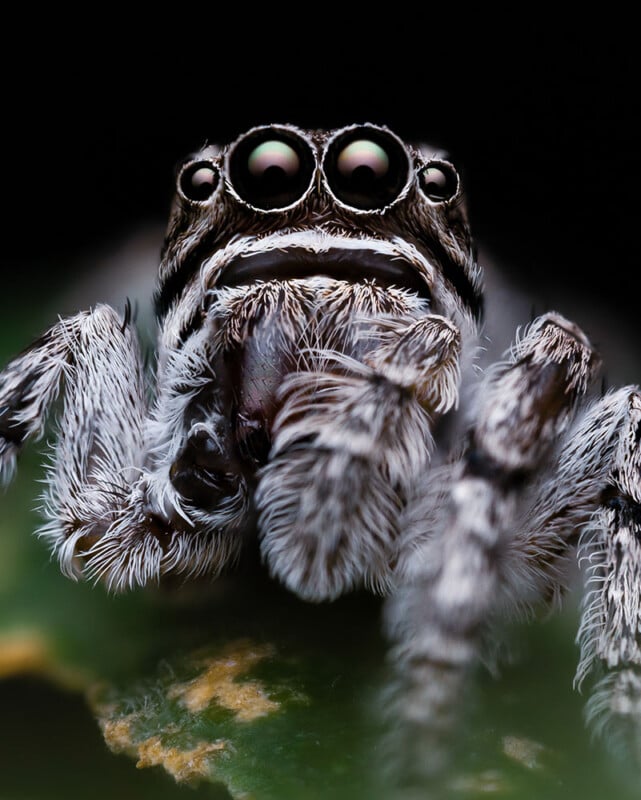 Jumping spider (Cocalus).
Jumping spider (Cocalus).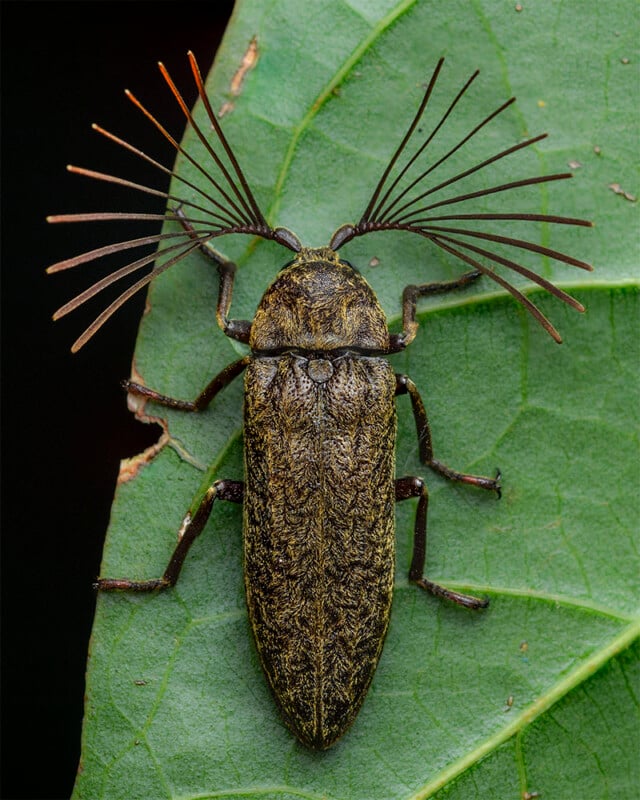 Callirhipis.
Callirhipis.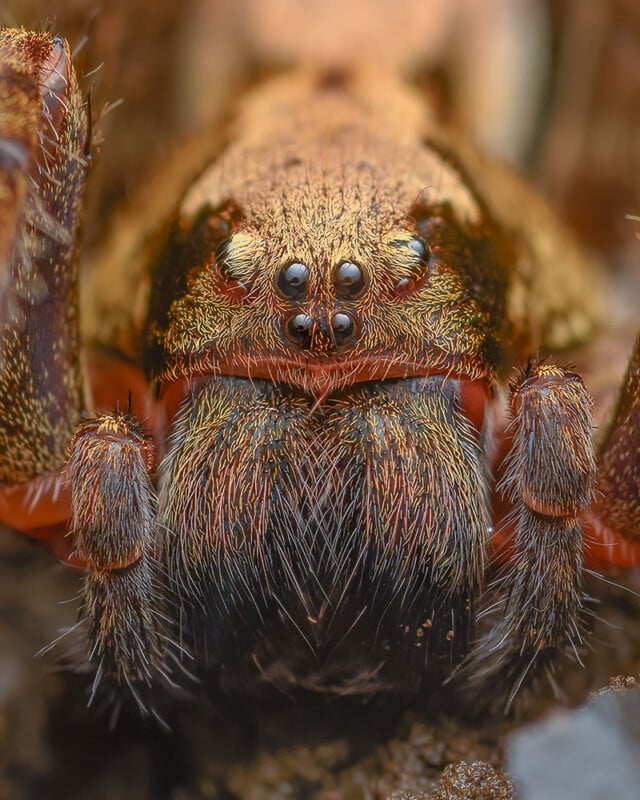 A Bowie spider.
A Bowie spider.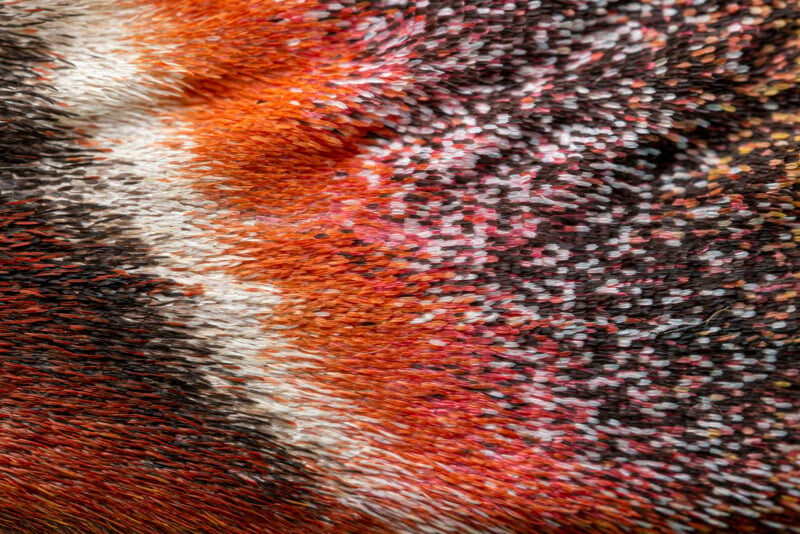 Close-up of an Atlas moth.
Close-up of an Atlas moth.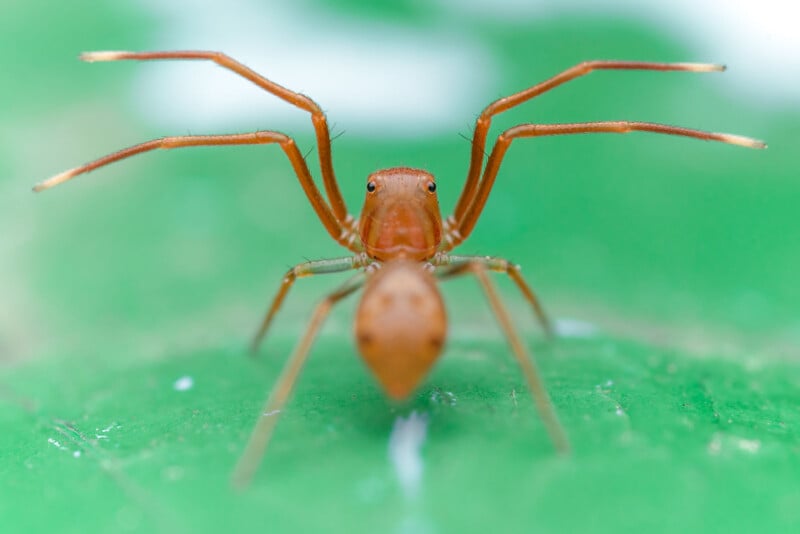 Ant-like crab spider.
Ant-like crab spider.The photographer says the aim of his work is “to debunk generational myths about wildlife and to bring in curiosity and wonder to life on Earth.”
“If it weren’t for all the life forms out there, we wouldn’t be here. Our lives are so entwined to just humanity we forget that there’s a whole food chain,” Hylton says.
“We oftentimes forget that there are over 20,000 species of flies, wasps, bees, birds, and even many mammals that accidentally maintain our crop.”
Hylton points out that even cobras play their part since their venom is used in “daily medicine including painkillers that are stronger and less addictive than morphine.”
“Without them we are nothing,” he adds. “So let’s start appreciating our wildlife!”
More of Hylton’s work can be found on his website and Instagram.
Image credits: Photographs by Lawrence Hylton.

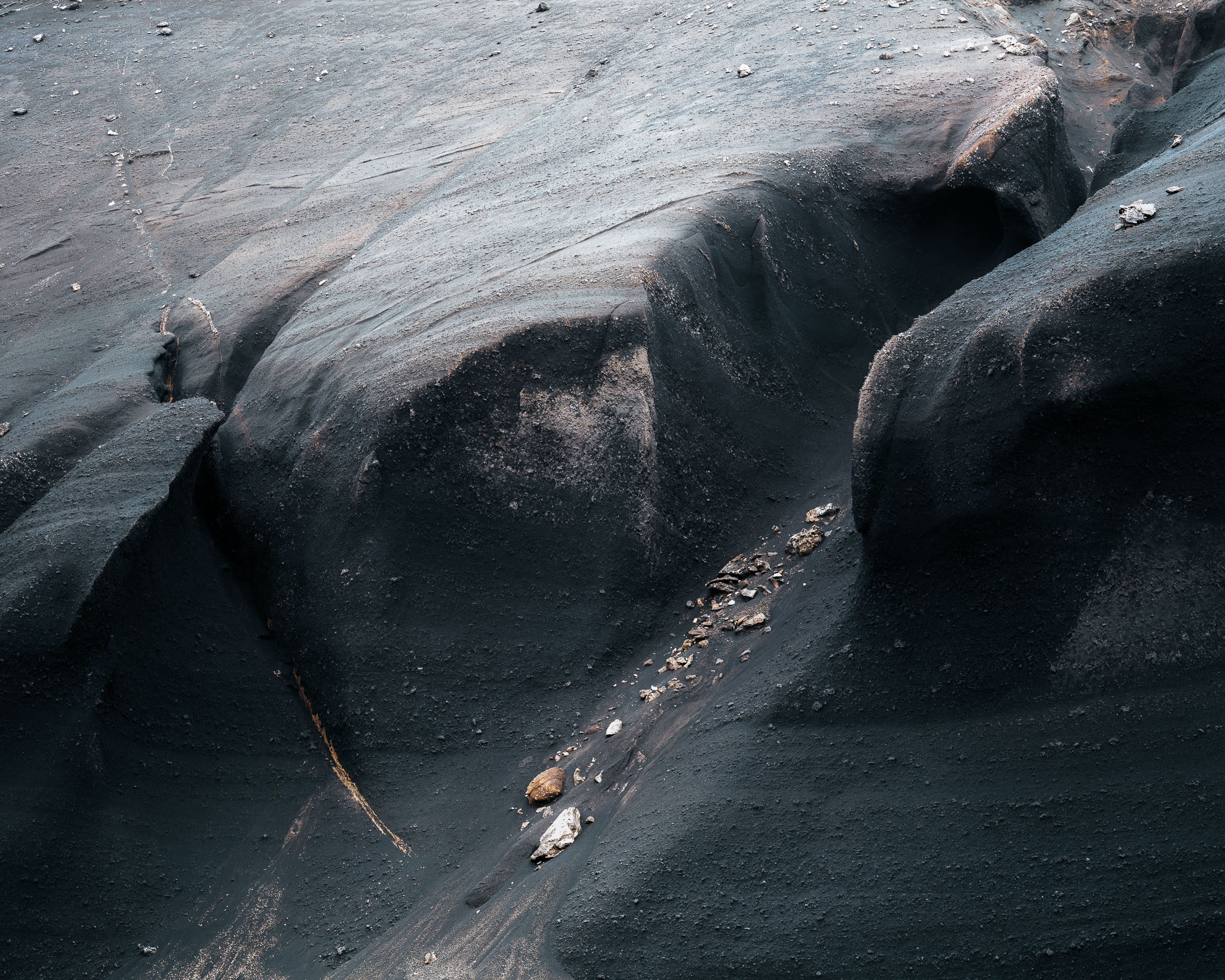

/cdn.vox-cdn.com/uploads/chorus_asset/file/25242409/20230608_Palworld_Screenshot_02.png)



 English (US) ·
English (US) ·